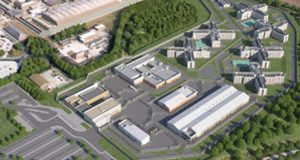The built environment is in a constant state of flux. Architectural styles change and new technologies bring in new structural possibilities. From simple cave dwelling to multi-storey skyscraper; wattle and daub hut to energy efficient Passivhaus; our man-made environment has developed and evolved over the centuries, picking up and incorporating technology as it presents itself
Over recent years the speed of that evolution has shown no signs of abating, in fact it could be argued that since the start of the e-revolution although the physicality of buildings has changed little, the way in which the built environment interacts with its users has moved more markedly than at any point in history.
The impact of technology to deliver ‘Smart Buildings’ that help provide greater efficiencies for their occupants is a relatively new phenomenon but is already having an impact on the way we use them.
Newly built offices, schools, hospitals and apartment blocks are riddled with sensors. These sensors gather information that can be used to tailor their environment, making those buildings more comfortable, efficient, sustainable and affordable.
But it is not just data garnered from the building envelope itself that can help improve productivity and increase efficiency. By harnessing that delivered through the Internet of Things (IoT), wearable technology, IT and OT systems and cloud computing our smart buildings are able to digest information from its users.
It means that those facilities managers with smart buildings in their portfolio can use that data to tailor the performance of a building or any given part, to suit the requirements of its users – almost to the point of individuals in the workplace.
Of course, it is one thing to have a building capable of garnering all this data and quite another to be able to use it. Being able to do that could herald a shift in the fundamental role of a facilities manager.
There is an argument that as the prevalence of smart buildings increases then the FM role will change from the day-to-day planned and reactive management of that building to one which is better able to influence the productivity and comfort of its occupants. It will see a facility manager’s job driven by the data delivered from the smart building forecasting the likely weight of demand for services. By doing so the manager would be free to act on the data proactively, helping alleviate maintenance issues by improving asset life cycles and saving energy where parts of the building are not being used.
It is almost inevitable that some change in the catch-all role of facility manager will occur, but the level of that change will depend on just how ‘smart’ an asset is, and with technology moving at such tremendous pace, what is smart today could look quite dumb tomorrow.
By 2050 it is estimated that 60 per cent of today’s buildings will still exist, accounting for as much as 45 per cent of total floor space. With those figures in mind it is easy to understand just how important it is for managers to actively look in to future proofing their assets. But where in the past managers might have focussed on longevity now the onus is on fitness for purpose and selecting those materials used to allow for a reduced lifespan.
Commercial office blocks in the centre of most major cities face refurbishment and fit-out every few years – be it at the end of a tenancy or at the behest of the board. These offer the perfect opportunity to introduce the latest smart systems and materials with a note of caution. In a Netflix world no-one wants to be stuck with a DVD.
Designers and influencers, including those facility managers desperate for the latest technology to help them deliver the best for their buildings and its occupants, must take the potential obsolescence of a system or material into consideration. At the very least its re-use and recyclability should be on the agenda as should the use of plastics in its production and packaging, but if the latest must-have system is going to be stripped out in a few years’ time it makes sense to ensure it is easy to do so. Designing for that obsolescence today becomes a vital step on the continued efficiency of a building in a year, ten years, 100 years in the future.
For facility managers, smart buildings and the analysis of data they and their occupants deliver has the potential to make not only the building work more efficiently but also its workforce. Through specific control of environment, a manager can provide the optimum working conditions for an individual. By doing so could help support inclusivity in the workplace and by using such smart technology could have an active hand in attracting the next generation of workers to that firm.
Smart technology is very definitely influencing the more traditional role of the facility manager. Whether that will enhance the scope of their current role or change it completely, only time will tell.
By Paul Roche, Group Director at Hurley Palmer Flatt





